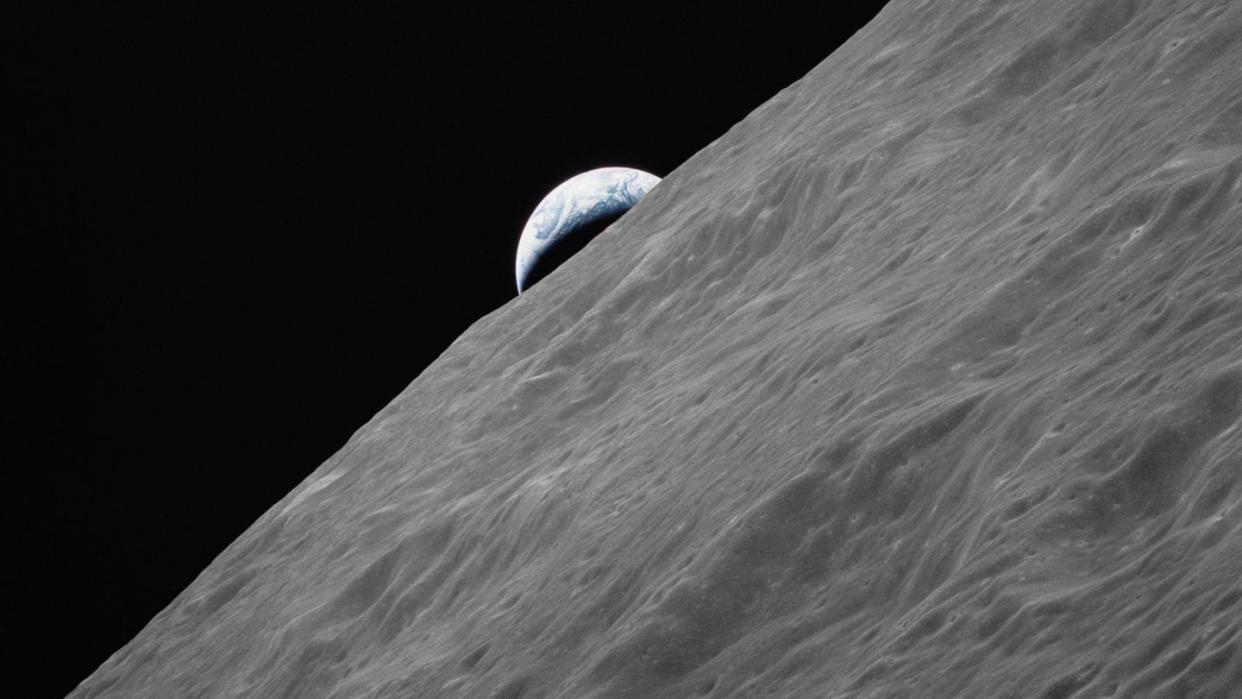The Moon is 40 Million Years Older Than We Thought

During the roiling, cataclysmic, and all-around hellish era that marked the early days of our Solar System, a Mars-sized proto-planet smacked into Earth, which led to the formation of our Moon.
Although evidence of this impact can be found in geology—both terrestrial and lunar—when this impact happened, exactly, has been hard to pinpoint.
Using atom probe tomography, scientists from the University of Chicago determined the Moon’s age by analyzing crystals originally collected from its surface during the Apollo 17 lunar mission 50 years ago.
In the early days of our Solar System, the Earth was a loner. But that all changed when a proto-planet about the size of Mars careened into Earth, sloughing off a large chunk of rock and debris that eventually coalesced into our Moon. Although scientists are pretty certain that this cataclysmic event formed our modern Earth-Moon system (parts of the protoplanet Theia have been found within the Earth itself), the timeline of exactly when this event occurred has been a bit hazy.
Now, a new study from the University of Chicago analyzing crystals brought back to Earth during the Apollo 17 mission in 1972 has pinpointed an exact date for the Moon’s birthday—4.46 billion years ago. The date is only 1.4 million years after the Earth itself formed from the protoplanetary disk of our Sun, and 40 million years earlier than scientists previously believed. The results of the study were published today in the journal Geochemical Perspective Letters.
“These crystals are the oldest known solids that formed after the giant impact,” Philipp Heck, University of Chicago professor and co-author, said in a press statement. “And because we know how old these crystals are, they serve as an anchor for the lunar chronology.”
Some 4.46 billion years ago, when Theia collided with Earth, the immense impact melted rock that eventually formed the lunar surface. When the surface was molten, it would’ve been impossible for zircon crystals to form, so these Apollo samples must have formed after this “magma ocean” (as the scientists describe it) had cooled. As such, these lunar crystals give only the minimum age of the Moon.
Previous analyses had established that 4.46 billion years could be about the time when the Moon cooled from its roiling birth, but this new study used a technique known as atom probe tomography to confirmed the Moon’s birth date—or, at the very least, its birth era.
“In atom probe tomography, we start by sharpening a piece of the lunar sample into a very sharp tip using a focused ion beam microscope, almost like a very fancy pencil sharpener,” Jennifer Greer, a PhD student at the University of Chicago, said in the press statement. “Then we use UV lasers to evaporate atoms from the surface of that tip. The atoms travel through a mass spectrometer, and how fast they move tells us how heavy they are, which in turn tells us what they’re made of.”
Using radiometric dating, which looks at the radioactive decay of isotopes of uranium and lead, Heck and his team were able to pinpoint the age of this very old lunar crystal to about 4.46 billion years.
So, while the Earth might still be the Moon’s elder, the two have been hanging out orbit around the Sun for even longer than we thought—by a long shot.
You Might Also Like


